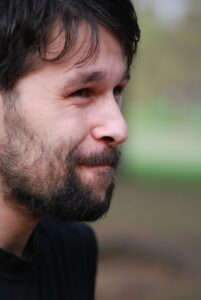In recent years, medical tourism has boomed, and one of the top procedures attracting international patients is hair restoration. The concept of getting a hair transplant during tourism has become more popular than ever in 2025. People now combine their vacation with a confidence-boosting procedure, saving money while enjoying new destinations.
But what does the process look like? How do you know if it’s safe? And where should you go? This blog walks you through what to expect when getting a hair transplant during tourism, covering everything from pre-travel planning to post-op care.
Why People Choose Hair Transplant During Tourism
The biggest driver behind getting a hair transplant during tourism is affordability. Clinics in countries like Turkey, India, Thailand, and Mexico offer high-quality procedures at a fraction of the cost in the US, UK, or Canada.
For example, a transplant that costs $15,000 in the U.S. might be as low as $2,500 in Turkey. And with all-inclusive medical tourism packages—covering airport pickup, accommodation, and the procedure—patients find it convenient and economical.
Top Countries for Hair Transplant During Tourism
If you’re thinking about a hair transplant during tourism, consider these leading destinations:
- Turkey – World-renowned clinics, experienced surgeons, and the most competitive prices.
- India – Offers a mix of affordability and advanced technology.
- Thailand – Known for clean, high-tech facilities and tourism appeal.
- Mexico – A preferred option for Americans looking for accessible care across the border.
Each country has developed a niche in offering hair transplants during tourism, making the experience streamlined for international patients.
What to Expect Before Your Trip
Planning your hair transplant during tourism starts with research. You’ll need to:
- Vet clinics and surgeons – Check for certifications, before-and-after photos, and reviews.
- Book your consultation – Most clinics offer virtual consultations before your visit.
- Understand your package – Does it include transport, hotel, meals, or aftercare?
- Check visa and COVID-19 travel rules – Requirements may vary depending on your destination.
Reputable clinics make the entire process easy by assigning patient coordinators to guide you step-by-step.

What Happens During the Procedure
On the day of your hair transplant during tourism, expect the following process:
- Arrival and paperwork: The clinic verifies your identity, performs a scalp analysis, and finalizes the graft plan.
- Pre-procedure prep: You’ll have your donor area cleaned and shaved (unless you opt for no-shave FUE).
- Surgery: Depending on the technique (FUE or FUT), the transplant can take 4–8 hours.
- Post-op review: Doctors will explain aftercare and give you medications or a recovery kit.
Most patients return to their hotel the same day with minimal discomfort.
Aftercare and Recovery While Abroad
After your hair transplant during tourism, you’ll typically need to stay in the country for 2–5 days. During this time, follow-up appointments ensure healing is on track. Some tips:
- Avoid sun exposure and swimming.
- Sleep with your head elevated.
- Use only approved products and follow the aftercare routine exactly.
Make sure you leave enough days in your itinerary to rest before flying back. The transplanted area needs time to heal, and travel stress can affect recovery.
Is Hair Transplant During Tourism Safe?
Yes—if you choose the right clinic. Safety in a hair transplant during tourism largely depends on:
- The surgeon’s experience
- Facility accreditation
- Hygiene standards
- Transparent communication
Always avoid deals that seem “too good to be true” and prioritize clinics with English-speaking staff, full transparency, and positive patient testimonials.
FAQs About Hair Transplant During Tourism
- Is it cheaper to get a hair transplant abroad?
Yes, the average cost savings can be up to 70% compared to Western countries, making hair transplant during tourism an attractive option for budget-conscious patients. - Will I be able to communicate with the doctors if I go to a non-English-speaking country?
Most clinics that cater to international patients offer full English-speaking support during the hair transplant during tourism process, including consultations, surgery, and follow-ups. - How long do I need to stay after the transplant?
Generally, 3–5 days is enough for most procedures done abroad. This allows for proper healing and post-op care before returning home after your hair transplant during tourism. - Are the results of international hair transplants as good as in the U.S. or the U.K.?
Absolutely. Many foreign surgeons are internationally trained and use state-of-the-art equipment. The key to success in hair transplant during tourism is vetting your clinic and surgeon thoroughly. - What should I bring when traveling for a hair transplant?
Bring loose clothing, a travel pillow, any prescribed medications, and your medical documents. You’ll also want to pack sunscreen and gentle shampoo recommended by your clinic for post-op care during your hair transplant during your tourism journey.
Conclusion
A hair transplant during tourism can be a smart, affordable, and even exciting way to restore your hair and confidence. By choosing a trusted clinic and planning your trip carefully, you can enjoy world-class results while exploring a new country. From Turkey to Thailand, international hair restoration is making confidence more accessible than ever.
Whether you’re traveling for the savings, the expertise, or the convenience, combining tourism with a hair transplant offers benefits that go far beyond your hairline. Just remember—do your research, follow aftercare closely, and you’ll return not only with great memories, but with new hair too. Schedule a Free Virtual Consultation with our experts at Hair Restoration Centers.
Call us today at +1(800) 510-3386
